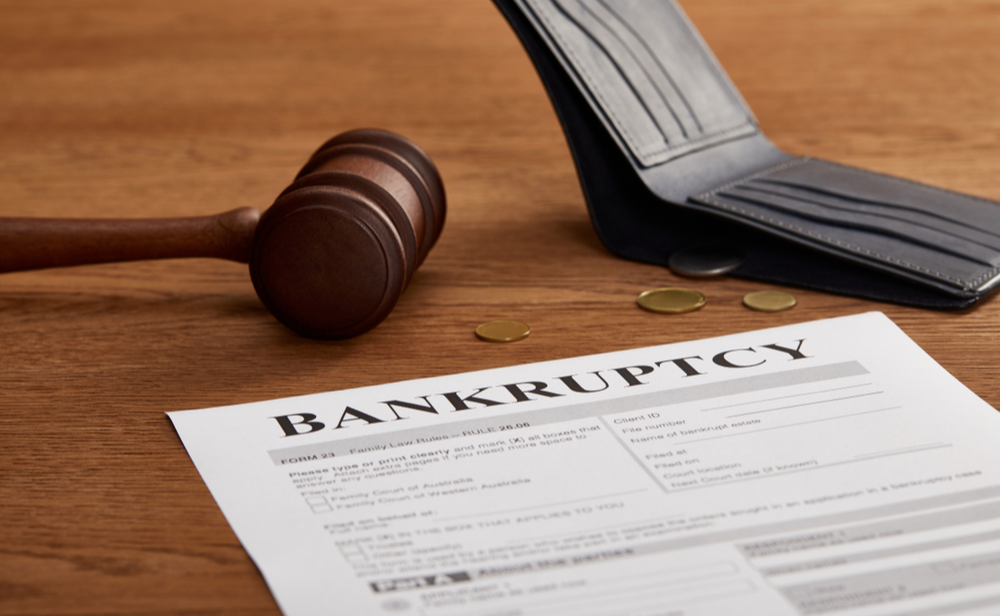How To Remove Bankruptcy From a Credit Report
More than 500,000 Americans are declared bankrupt every year. It should be known that even after bankruptcy has been exuded, there are repercussions that follow, such as mending your credit. Let’s go over how to remove bankruptcy from a credit report.
Chances of error are high with credit bureaus having to deal with many financial crises of the people. Therefore, you should thoroughly review and check your credit report for inaccurately reported information, especially the data linked to your bankruptcy.
Fortunately, your credit can be repaired despite a bankruptcy on your record.
How Long Does It Take To Remove a Bankruptcy From a Credit Report?
Depending on the type, bankruptcy can stay on your report for about seven to ten years. For instance, a Chapter 7 bankruptcy remains on your credit report for 10 years from the original date it was registered, while a Chapter 13 bankruptcy stays on your report for up to seven years.
It should, however, be noted that bankruptcy can be removed from your report earlier, and lines of credit can be received after bankruptcy without having to wait seven to ten years.
It often takes only a few years to be able to get loans and access to credit cards again. Although you may qualify for loans again, you will have to pay higher interest rates.
One should work on nullifying the effects of bankruptcy instead of getting stuck with high rates of interest and trying to achieve low balances. It can be done by disputing the bankruptcy and taking solid action in order to restore your good credit history for better loans and credit offers.
Along with having a bankruptcy taken off your credit report, there are several other means through which you can recover from bankruptcy that had been recorded in your report.
Which Accounts are Included in a Bankruptcy?
Accounts such as collections, judgments, repossessions, and charge-offs will remain on your credit report for up to seven years and appear “included in bankruptcy” after filing one. These accounts can be removed from your report before seven years if disputed correctly.
Will a Bankruptcy Affect Your Credit Score?
A bankruptcy can drastically damage your credit score. In consonance with Fico, it can pull the score down by about 150 points for a person with a 680 credit score. The higher your credit score is, the more it depreciates with bankruptcy.
Even if you qualify for loans in the future, you’ll most likely have to pay a higher interest rate and receive a limited amount to borrow.
At times, filing for bankruptcy is thought to be the best decision financially; however, its impact on your credit score should be kept in mind when filing for one.
How to Remove a Bankruptcy from Your Credit Report
Get a free copy of your annual credit report from the three major credit bureaus via annualcreditreport.com, as users are permitted one copy free of cost every year.
A credit dispute letter will need to be written to each of the three bureaus, Experian, Equifax, and TransUnion while disputing a bankruptcy. Ensure to sound professional when writing the letter and keep in mind consumers, too, have rights according to the Fair Credit Reporting Act (FCRA).
If credit bureaus fail to provide evidence of the bankruptcy within 30 days, it will be abolished from your credit report. Contemplate hiring a professional credit repair agency in case of failure to remove the bankruptcy.
Professional Credit Repair vs. DIY
Seeking professional help or hiring a credit repair company is usually recommended to remove negative items such as bankruptcies. The advanced strategies, in this case, are better left to credit repair professionals as they are more familiar with the know-how of credit bureaus.
Following are a few of the recommended credit repair agencies.
Can I Rebuild My Credit After Bankruptcy?
The next most important move after disputing a bankruptcy from your credit report is to enforce and administer responsible financial habits within one’s self in order to improve and rebuild your credit score.
This can be done via regularly monitoring your credit report, reviewing expenses and income, as well as building up your crisis funds to avoid financial calamities in the future. Ensure to make timely payments of bills as your payment history adds up to a big share of your credit score. Accruing more debt should be avoided if you want to rebuild your credit.
You may want to opt for a secured credit card which is specially designed for those looking to rebuild their credit. Based on your security deposit, your lender will set aside a credit limit for you. Your credit can start to rebuild instantly with timely payments being made.
Can You Remove a Bankruptcy By Yourself?
Similar to disputing negative entries on your credit report, it is possible to get rid of a bankruptcy on your own; however, this can be a tedious and long process, and results are not guaranteed.
The bankruptcy can be disputed by asking credit bureaus to verify it or by claiming the wrongly stated information on your credit report. Your procedural request letter should be responded to within thirty days.
In some cases, you can even verify the bankruptcy with courts as credit bureaus falsely claim that verification with them has been done. In case of verification by the courts is not being done, get their statement in writing to send to the credit bureaus in order to remove bankruptcy from your history.
The success rate for this method is uncertain. However, credit repair agencies can also negotiate the process for you as they are highly skilled and experienced at removing erroneous entries from your credit report. They have specialists to abolish bankruptcies and other negative items from your credit report.
Get Your Bankruptcy Removed Now!
Lexington Law is a highly recommended and well-reputed credit repair company to help you repair your credit and dispute bankruptcies.
Call them now at (800) 220 – 0084 for a free expert credit consultation.
Wrap Up
Disputing bankruptcy is a tedious and difficult procedure, but it’s a step towards rebuilding your credit if done right. A free copy of your credit report can be attained every 12 months to review and rectify any erroneous entries.
If it’s accurately stated, you cannot remove a bankruptcy from a credit report. The two types of bankruptcies stay on your report for up to 10 years. As per the FCRA, negative items on your record, such as bankruptcy, can be disputed and removed if the lending institute or creditor reporting the information cannot give evidence.






